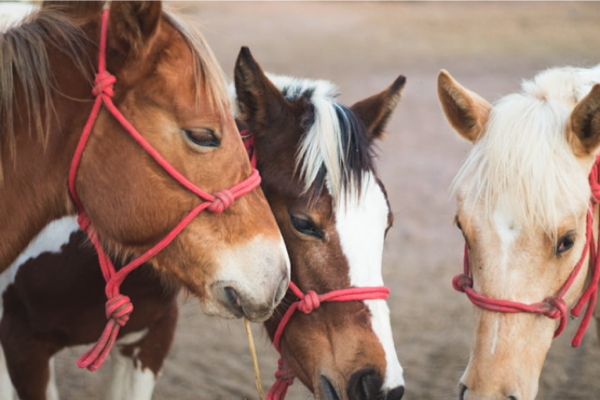 |
RacingBetter News |
| Thursday 28th November 2024 | |
3 Rules for Equine Emergencies
 Photo by Isabela Kronemberger on Unsplash
Photo by Isabela Kronemberger on Unsplash
When it comes to your horses, you might face countless types of emergencies, each with various ways to address them. Regardless of the situation, key steps to prepare and conduct yourself are essential in any emergency.
Understand Your Horse
The worst situation in an emergency is failing to recognize it as an emergency. A horse might roll around frantically, but without knowing if this is typical behavior, it could go unnoticed as a sign of distress. A horse standing with its hind legs tucked beneath may appear to seek comfort, though it could indicate an issue.
Heavy breathing after coming in from the pasture might seem like a lack of fitness but could signal something more serious. Emergencies aren’t just about veterinary knowledge or expertise, though those are valuable; they’re about the vital understanding an owner or trainer has of their horse.
Recognizing normal behavior is the key to identifying abnormal behavior. The way a horse eats, the speed at which it eats, its resting habits, interactions with other horses, and its standard respiratory rate, pulse, and temperature are all critical benchmarks. When a horse begins showing signs outside of these norms, it signals that something may be wrong.
Consider Your Financial Limits for Your Horse
Making this kind of decision as a horse owner is never easy. There’s no single correct answer, as it often depends on factors like your financial situation, your horse’s training and age, and your bond with them. However, avoid facing this choice during a highly emotional and stressful moment, such as when your horse is experiencing colic. That’s not the time to determine whether colic surgery is the right move.
The cost of routine colic surgery is approximately six thousand dollars, while treating a simple puncture wound could range from two to five thousand dollars. To avoid added stress, plan ahead and determine how much you can spend on your horse’s health.
If your horse is at risk of lung bleeding, Lasix injections can manage the condition. Ensure you are both financially and emotionally prepared to make the best decision for your horse in an emergency.
Keep Emergency Supplies on Hand
You can find large emergency kits online that cost hundreds of dollars, but assembling your own can be more practical and just as effective. While you hope never to need one, having the right supplies ready can make all the difference in a critical situation. If you do use anything from your kit, make it a rule to replace those items promptly.
For example, Vetrap might be handy when wrapping a tail for a show, but it's even more crucial for managing a bleeding wound on your horse. Below is a list of essentials every emergency kit should include. Most of these items are long-lasting, but keep an eye on injectables, as they can freeze and become unusable during harsh winters.
-
Thermometer: Whether glass or digital, both work well. Affordable options are effective for getting a close estimate of your horse’s temperature, and a small difference of half a degree won’t be a big concern.
-
Stethoscope: This handy tool lets you listen to your horse, making conversations with your vet over the phone more detailed and helpful.
Knives, syringes, scissors, duct tape, twine, and gloves are also essential items for handling various situations and emergencies with your horse.
Endnote
Stay grounded and prioritize safety when caring for your horse, reach out to your veterinarian or trusted peers for guidance, and ensure you remain in a secure space. Take the time to observe carefully and truly understand the situation. Sometimes, calmly stepping back to assess from the sidelines can provide valuable insight.







